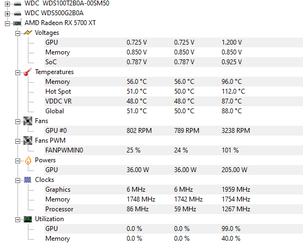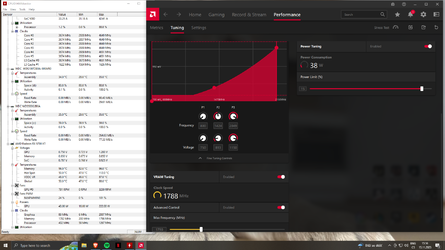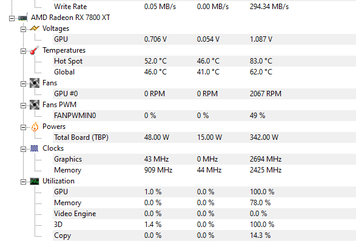Hello,
I had to postpone my graphics upgrade so meanwhile I am looking into what may be causing occasional instability (reset when gaming) of my MSI AMD 5700XT.
See the attached reading from the CPUID HW Monitor - I am not much of a GPU guy in terms of knowing the voltages, OCing etc. I know the 5700XT run a little hot but is something wrong in the picture? Power draw? Other temps? The hot spot is a hot spot for a reason but 110-112 is up there.
The card runs great 9/10 times but sometimes the PC hard resets when gaming - RDR2 / Jedi Survivor. It is not often, but it happens from day 1 of owning the card (its been three years).
Any ideas?

I had to postpone my graphics upgrade so meanwhile I am looking into what may be causing occasional instability (reset when gaming) of my MSI AMD 5700XT.
See the attached reading from the CPUID HW Monitor - I am not much of a GPU guy in terms of knowing the voltages, OCing etc. I know the 5700XT run a little hot but is something wrong in the picture? Power draw? Other temps? The hot spot is a hot spot for a reason but 110-112 is up there.
The card runs great 9/10 times but sometimes the PC hard resets when gaming - RDR2 / Jedi Survivor. It is not often, but it happens from day 1 of owning the card (its been three years).
Any ideas?




